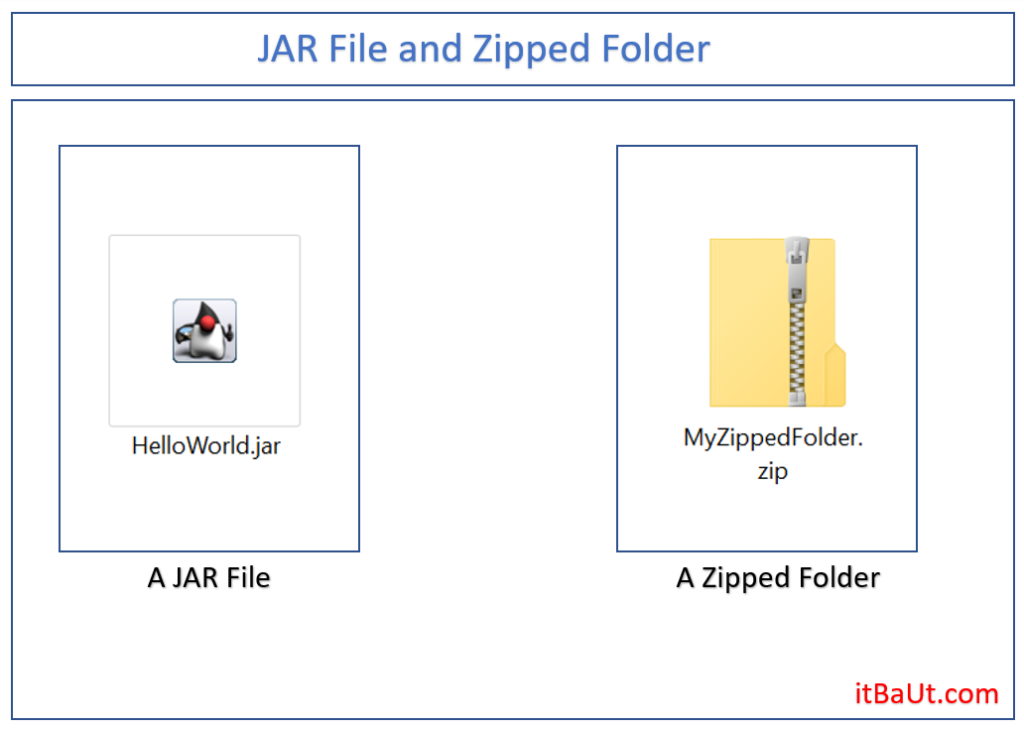Greetings, fellow readers! Prepare to be captivated as we introduce you to the intriguing world of Java where we will try to understand ‘What are the JAR files in Java’? Typically we all know that Java is everywhere and we will learn that in some different articles. Today, in this article, we will majorly focus on what the JAR files are, and how they are generated and used in the real world. So, let’s get started and play around it.
What are the JAR files in Java?
A JAR (Java ARchive) file is a platform-independent file format used to package Java classes and related resources, such as images, sound files, and configuration files, into a single archive. JAR files are commonly used for distributing Java libraries, applications, and executable Java programs.
We could consider a JAR file like a compressed or zipped folder which may contain various files, sub-folders, images, audio, videos, documents, etc. Similarly, a JAR file contains .class files, .js files, .css files, and other resources like images, property files, and many more.
The below image shows the above analogy –

Key characteristics of JAR files
Below is the list of key characteristics of JAR files –
Archive Format
A JAR file is essentially a compressed archive that combines multiple Java class files, resources, and metadata into a single file with the extension “.jar.”
Compression
JAR files are often compressed using the ZIP compression format. This compression reduces file size and makes it more efficient for distribution over the internet.
Java Libraries
JAR files are commonly used to package Java libraries and frameworks. These libraries can be added to a Java project’s classpath, allowing developers to use the classes and methods provided by the library in their own code.
Executable JARs
JAR files can also be created with a special manifest file that specifies a main class. These “executable JARs” can be run as standalone Java applications by simply double-clicking the JAR file or using the “java -jar” command.
Resource Packaging
In addition to Java classes, JAR files can include non-code resources, such as property files, XML configuration files, images, and other assets needed by an application.
Create a JAR file
If the user wants to create a JAR file, they could use the below command in the command prompt –
Syntax: jar cf <jarFileName.jar> javaFileName
Command: jar cf HelloWorld.jar HelloWorld.javaView a JAR file
Once a JAR file has been created and the user wants to have a look at its content then, they could use the below command in the command prompt –
Syntax: jar tf <jarFileName.jar>
Command: jar tf HelloWorld.jarThe output of the below command is shown as below –
META-INF/
META-INF/MANIFEST.MF
HelloWorld.java
Extract a JAR file
To extract the files from the JAR file, the below command could be used –
Syntax: jar xf <jarFileName.jar>
Command: jar xf HelloWorld.jarRun a JAR file
To run the application packed as a JAR file, the below command could be used –
Syntax: jar -jar <jarFileName.jar>
Command: java -jar HelloWorld.jarConclusion
In summary, JAR files are a fundamental part of Java development, allowing developers to package Java code and resources into a portable and distributable format. They are crucial for creating reusable libraries, distributing Java applications, managing classpath dependencies, and simplifying the deployment of Java software.
Still, if you have any questions & queries 🤔 please comment them below and we will try our best to answer them at the earliest.
HAPPY LEARNING!! 😊

This Post Has 3 Comments
Fantastic site A lot of helpful info here Im sending it to some buddies ans additionally sharing in delicious And naturally thanks on your sweat
I loved as much as youll receive carried out right here The sketch is attractive your authored material stylish nonetheless you command get bought an nervousness over that you wish be delivering the following unwell unquestionably come more formerly again as exactly the same nearly a lot often inside case you shield this hike.
I do believe all the ideas youve presented for your post They are really convincing and will certainly work Nonetheless the posts are too short for novices May just you please lengthen them a little from subsequent time Thanks for the post